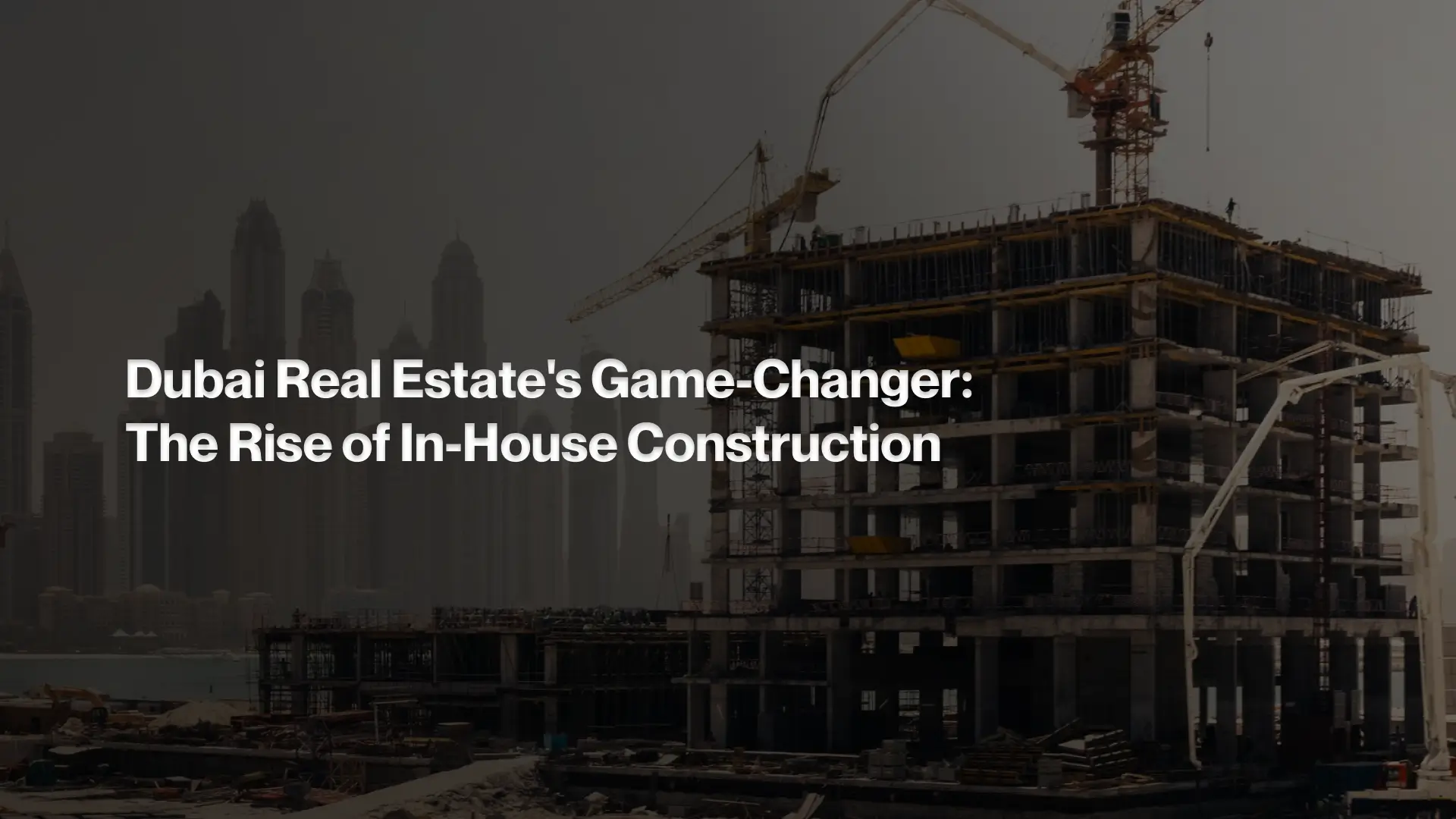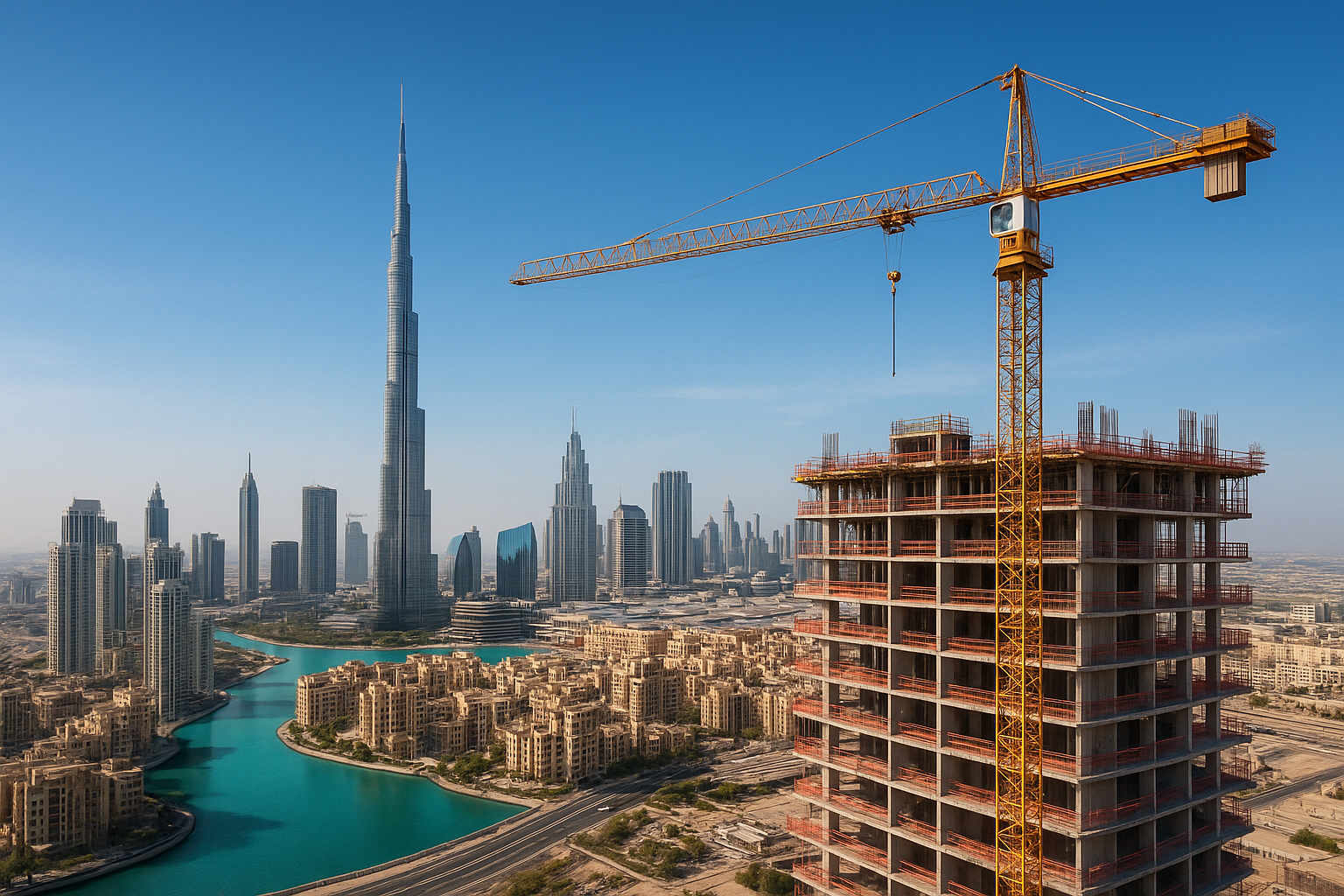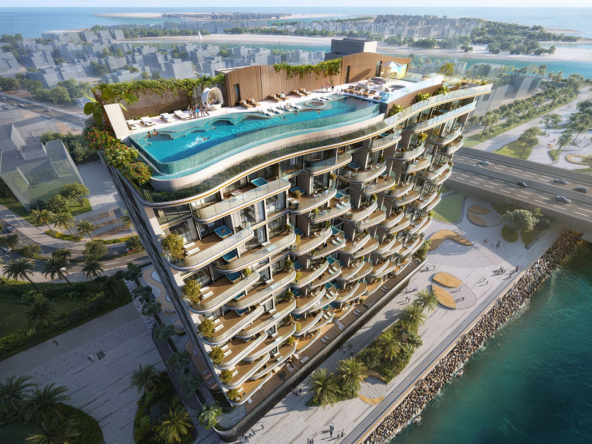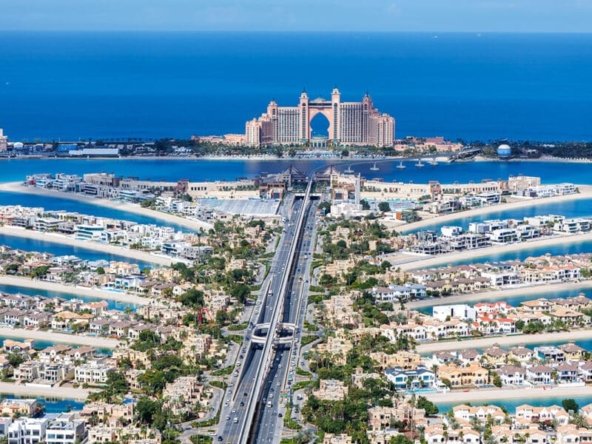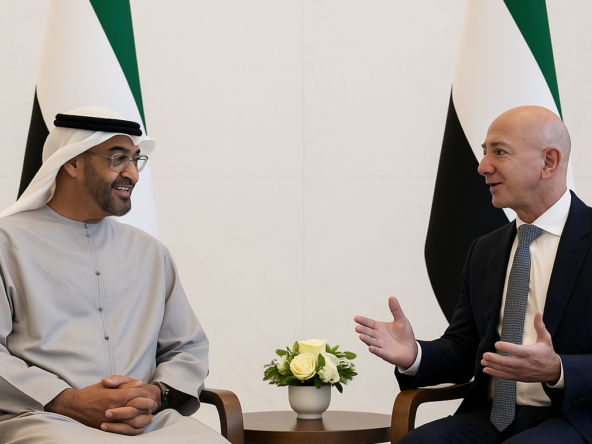The Dubai real estate market has long been a beacon of innovation, luxury, and architectural brilliance. From the iconic Burj Khalifa to sprawling waterfront communities, the city’s skyline continues to evolve. However, the latest game-changing trend reshaping this industry is the rise of in-house construction by leading real estate developers. This approach is transforming how projects are designed, executed, and delivered, offering greater efficiency, cost savings, and quality assurance while redefining market dynamics.
Understanding In-House Construction in Dubai Real Estate
In-house construction refers to developers managing and executing construction projects internally instead of outsourcing to third-party contractors. This model involves the developer overseeing everything—planning, design, procurement, and construction—under one umbrella. In Dubai’s competitive property landscape, this strategy ensures faster timelines, better quality control, and reduced dependency on external factors.
Unlike traditional methods, where developers rely heavily on subcontractors, in-house construction centralizes authority and accountability. The result is a streamlined process that aligns perfectly with Dubai’s ambition to deliver sustainable, innovative, and world-class developments.
Why Developers Are Shifting to In-House Construction
1. Enhanced Quality Control
Dubai’s reputation for luxury real estate demands impeccable quality standards. By keeping construction in-house, developers maintain direct oversight of building materials, safety practices, and architectural precision. This minimizes risks associated with third-party errors and ensures every project reflects the brand’s vision and reliability.
2. Cost Efficiency
While outsourcing may initially seem cheaper, the long-term costs of delays, disputes, and mismanagement are significant. In-house teams help developers cut unnecessary expenses, control procurement processes, and maximize return on investment (ROI).
3. Faster Project Delivery
With Dubai’s booming property demand, speed to market is crucial. In-house construction eliminates communication gaps between developers and contractors, accelerating decision-making and allowing projects to meet deadlines without compromising on quality.
4. Innovation and Sustainability
Developers embracing in-house models have greater freedom to experiment with eco-friendly materials, smart home technologies, and sustainable construction practices. This aligns with Dubai’s Green Building Regulations and supports the city’s vision for a sustainable urban future.
Key Players Leading the In-House Construction Revolution
Several prominent Dubai developers are spearheading this trend by building dedicated in-house construction divisions.
-
Emaar Properties: Known for projects like Downtown Dubai and Dubai Marina, Emaar has expanded in-house construction to maintain its luxury brand standards.
-
DAMAC Properties: By streamlining internal project management, DAMAC ensures high-quality residential and commercial properties are delivered on time.
-
Nakheel: The master developer behind Palm Jumeirah leverages in-house construction for mega-scale projects, ensuring innovation and efficiency.
These players demonstrate how in-house models are not just a trend but a strategic necessity for Dubai’s ever-growing real estate landscape.
Impact of In-House Construction on Buyers and Investors
1. Greater Trust and Transparency
When developers manage construction internally, investors gain confidence in the transparency of the process. This reduces risks of cost overruns or project delays, making Dubai properties a more secure investment.
2. Consistent Quality
Homebuyers benefit from uniform quality standards, whether purchasing a luxury villa in Palm Jumeirah or an affordable apartment in Dubai South. In-house control ensures value for money at every price point.
3. Competitive Pricing
By eliminating third-party overheads, developers can offer competitive pricing without compromising on luxury. This affordability factor further strengthens Dubai’s position as a global real estate hub.
The Role of Technology in In-House Construction
Smart Building Systems
In-house construction allows developers to directly integrate smart home technologies, energy-efficient designs, and IoT-enabled infrastructure.
BIM (Building Information Modeling)
With internal teams managing construction, BIM tools are more effectively utilized to simulate project outcomes, reduce waste, and optimize resources.
AI and Robotics
Developers can experiment with robotic automation, 3D printing, and AI-powered monitoring systems, creating futuristic communities that align with Dubai’s smart city vision.
Sustainability and Environmental Benefits
Dubai has ambitious sustainability goals as part of its 2040 Urban Master Plan. In-house construction accelerates the adoption of green building practices, including:
-
Solar panel integration
-
Energy-efficient cooling systems
-
Recyclable construction materials
-
Water-saving infrastructure
By aligning directly with environmental regulations, developers secure both government approvals and consumer trust.
Challenges Facing In-House Construction in Dubai
While this model offers significant benefits, challenges remain:
-
Initial Investment: Setting up in-house divisions requires substantial financial and human resource investment.
-
Skilled Workforce Demand: Recruiting and retaining specialized talent is essential to maintaining project standards.
-
Regulatory Compliance: Developers must stay updated on evolving Dubai Municipality regulations and building codes.
-
Scalability: For smaller developers, managing large-scale in-house operations can be resource-intensive.
Despite these challenges, the long-term benefits make in-house construction a sustainable and profitable approach.
Future Outlook: The Next Phase of Dubai’s Real Estate Growth
The rise of in-house construction signals a paradigm shift in Dubai’s property sector. Looking ahead:
-
More developers are expected to adopt in-house models to maintain control, quality, and profitability.
-
Technological advancements will further streamline construction, from AI-driven design to 3D-printed homes.
-
Buyers and investors will enjoy faster delivery, higher transparency, and enhanced value.
Dubai, already known as a global benchmark in real estate innovation, is now setting a new standard by embracing self-reliant construction ecosystems.
Conclusion
The rise of in-house construction in Dubai is more than just a trend—it is the future of real estate development. By integrating design, execution, and technology under one roof, developers are delivering projects with unmatched efficiency, quality, and sustainability. For investors and buyers, this translates into trust, transparency, and long-term value.
As Dubai continues to grow as a world-class property market, the in-house construction model will remain its game-changer, driving the city’s next phase of architectural and economic evolution.

